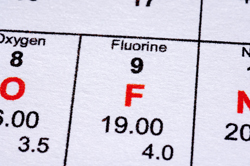Storing hydrogen in solid form for mobile application
Nature's solar, wind and water resources are promising candidates to help relieve dependence on a dwindling supply of fossil fuels whose combustion is increasingly associated with global climate change. However, these alternative energy forms are plagued by some of the same issues facing fossil fuel-based energy, namely inconsistent supply (changing over time) and uneven geographical distribution. Hydrogen is the most abundant element in the Universe and could solve both those problems. However, it is difficult to store at room temperature with the density and compactness required for mobile applications. Scientists initiated the 'Fluorine substituted high-capacity hydrides for hydrogen storage at low working temperatures' (FLYHY) project to develop novel materials and processes for hydrogen storage in the solid state. FLYHY focused on modifying high hydrogen-capacity materials by substituting some hydrogen atoms with halogens (fluorine, chlorine, bromine and iodine) using commercially up-scalable preparation processes. The goal was to achieve high storage density, fast hydrogen loading and unloading speeds, and heats of operation compatible with fuel cells (proton exchange membrane (PEM)). Several promising borohydrides were investigated including lithium borohydride (LiBH4) and calcium borohydride (Ca(BH4)2). Substitution of the BH4- groups was evaluated for the various halogens and resulting compounds characterised with respect to the desired properties. Fluorine substitution in calcium, lithium and sodium-based reactive hydride composites (RHCs) and the expected lowering of hydrogen release temperatures was observed. Optimisation of reaction temperatures, pressures and additives is expected to yield reaction pathways that maintain the high storage capacity and cycling stability of the parent compounds. Life-cycle analysis and comparisons of cost of fuelling support the competitiveness of solid state hydrogen storage with conventional compressed gas or liquid technologies with one caveat. Raw materials must be obtained in bulk from large-scale industrial suppliers rather than in gramme amounts from fine chemicals suppliers. However, effects of lower purities must be assessed. FLYHY made important progress in the development of solid state hydrogen storage materials with storage densities, rapid hydrogen cycling and temperatures compatible with integration with fuel cells for mobile and stationary applications. Hydrogen's potential to replace fossil fuels as a clean, renewable and secure energy source may be one step closer to large-scale realisation.







